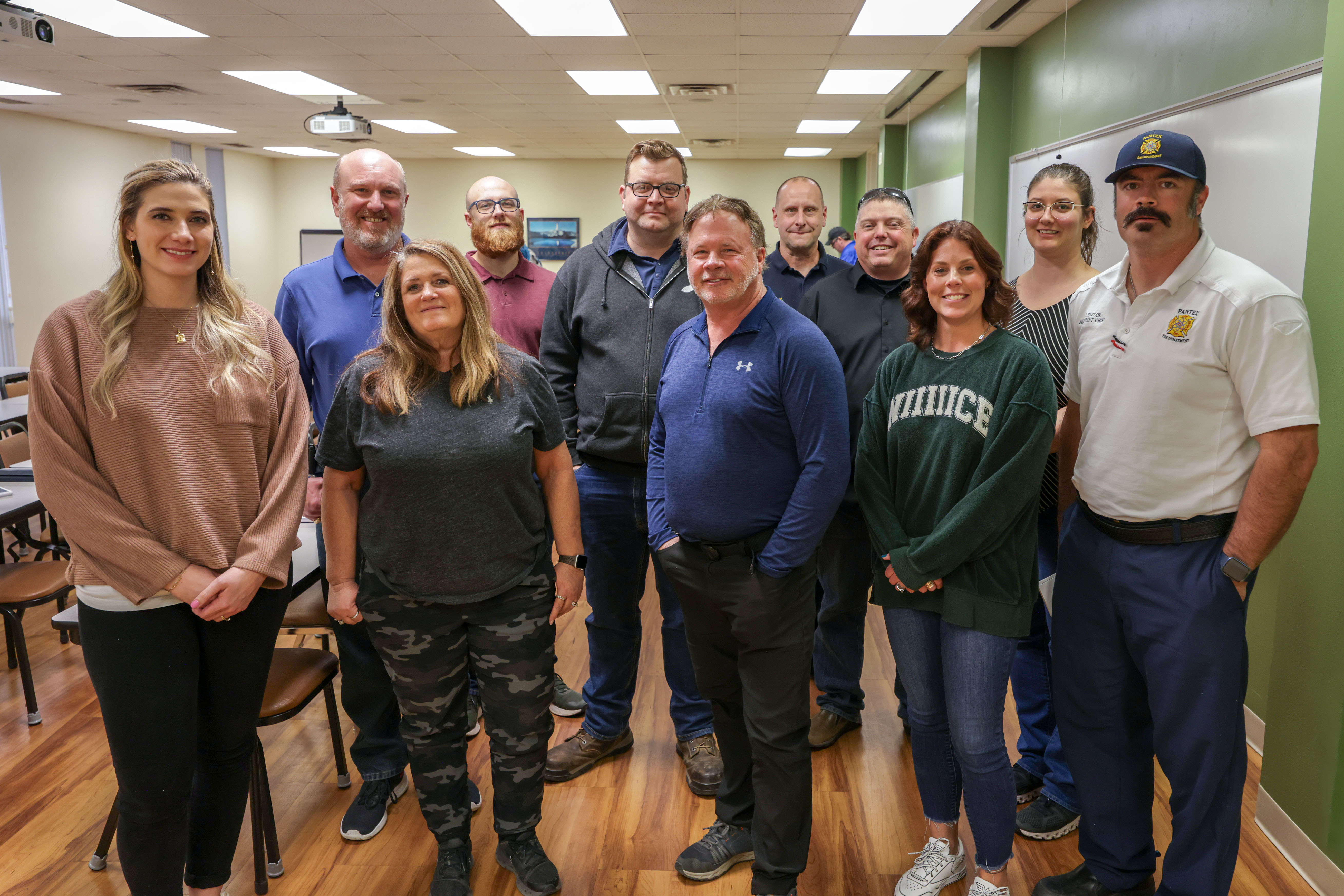Pantex partners with the best to prepare for the worst

Pantexans from all over the plant joined together to train on emergency response to rural mass casualties.
Disaster can strike as quickly and unexpectedly as a rattlesnake bite while walking through weeds. Once it happens, the needs from every angle – from the initial emergency response to assisting the families of victims – are rapid-fire, and can exhaust the limited resources of small communities. The isolation in the Texas Panhandle exacerbates that problem.
“Amarillo is an island in the Texas Panhandle. If we need help, it could be 48-72 hours before we get it,” said instructor Elton B.
To help Panhandle-area organizations better prepare for what could – and does – happen, Amarillo College in February conducted a Mass Fatalities Planning and Response for Rural Communities training. This class was made possible by a grant that Pantex and Amarillo College secured through the National Institute of Environmental Health Sciences/Department of Energy Nuclear Workers Training Program. This unique learning opportunity expanded because Pantex decided to open up the training to local first responders and connected entities in the Panhandle and South Plains.
Co-trainer, Dana H., defined a mass casualty as anything “more than a rural community has the resources to handle.” This, they said, can be the result of natural disaster, inclement weather, an active shooter, large crashes, a gas leak, and more.
The course was tailored to the people in the Texas Panhandle due to its unique needs and covered a variety of topics that could be needed after a mass casualty event that could lead to fatalities in a rural area. This included how to set up a temporary morgue, human remains recovery and storage, family assistance, data collection, and how to get federal resources to your rural community.
Thanks to the wide variety of attendees, topics were discussed from many different perspectives., Firefighters, law enforcement officers, dispatchers, a meteorologist, individuals from public health and emergency management, morgue technicians, and even a Justice of the Peace all provided input based on their respective experiences. Attendees from all over the region, including Pantex, Amarillo, Brownfield, Lefors, Borger, Hereford, Lazbuddie, Panhandle, and Wheeler, participated in the event.
Though this class material was very heavy in nature, many attendees complimented the instructors for keeping the training engaging.
Elton, whose experience comes from the Army Intelligence field, Amarillo Fire Department, and his years teaching environmental health and fire protection technology at Amarillo College, and Dana, who is recently retired from Amarillo Fire Department after 32 years, focused on participants knowing their resources and pushed networking throughout the day.
Dana noted several times that “it is key to break things down into something you can manage,” and on days when the worst happens “it is incredibly important that we have that cooperation” between entities working incidents like this.
“The ability to see how the whole Panhandle can work together to help each other out and the networking that is available here is essential for such a rural area,” said Pantexan Sandra L. “This is all helpful in regards to preparing for mass casualties.”
Jeff W., the director of Safety & Environmental Technology for Amarillo College, worked with Terrel C. to secure a grant from National Partnership for Environmental Training that provided this training for Pantex employees.
“Attendees now have those tools in their toolkit so that they can reach out and effectively deal with a mass fatalities incident,” said Terrel. “This class was effective because we had so many people from different backgrounds and we had a sharing of information for a dynamic group discussion. At Pantex we are so fortunate to have our Amarillo College partners. We have received almost $3 million in grants since we started working together to get more training for Pantex employees, which also at times benefits area groups that might not have the funds for it.”
